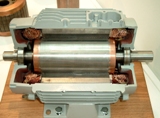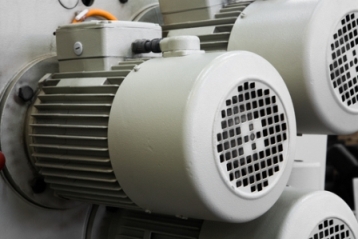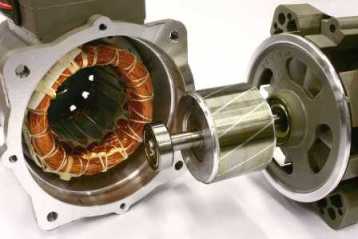Improvement of electric motors in automated electric drive systems
 The development of electric motors is currently going in the following directions:
The development of electric motors is currently going in the following directions:
-
improved energy and performance;
-
increasing efficiency, reducing consumption of materials and noise, increasing reliability and longevity of work;
-
better matching of motors and their power semiconductor converters;
-
expansion of the fleet of electric motors with a specialized design, object-oriented for specific conditions of use.
Modern DC motors are improved due to the use of metal fibers and metal-ceramic materials in the brush collector block, which can significantly increase the peripheral speed of the collectors of these motors. The need to use a brush-collecting unit and the associated disadvantages of traditional DC motors led in the following years to a reduction in their power share compared to AC motors.
Asynchronous squirrel-cage motors are structurally the simplest and most reliable, which is why they have recently become widespread in frequency-controlled electric drives with autonomous inverters (frequency converters) that perform pulse width modulation (PWM)… The improvement of these engines is due to the use of new materials and more efficient methods of intensive cooling.

Prospects for the use of asynchronous electric motors with a phase rotor are associated with their use in systems with dual power machines.
Synchronous electric motors are traditionally used in the power range of hundreds of kilowatts and more. Their improvement is due to the elimination of contacts by switching to rotary rectifiers and the use of permanent magnets.
An absolute prospect are valve motors, which, being essentially synchronous motors, are often considered DC motors due to the fact that they are fed from the DC network via an autonomous inverter controlled by signals from the rotor position sensors.
Valve engines with high forced rotor magnets have the lowest specific gravity of any machine. Therefore, with their use, the design problems of mechatronic modules are solved effectively.
At present, valve induction electric motors and electric motors with conical poles have received intensive development. Such electric motors have the simplest rotor made of a soft magnetic core. They therefore allow high rotor speeds and are very reliable.
In the low-power range, stepper motors have traditionally continued to be developed, which, due to their design features, ensure the creation of compact multi-axis mechatronic modules with a discrete nature of movements.
The technical condition of electric motors in modern variable electric drive systems is constantly monitored and diagnosed. In this regard, in addition to speed sensors, rotor position, Hall sensors, temperature and vibration sensors are also built into the motors, which makes it possible to increasing operational reliability of electric motors.
Another direction to increase the reliability of operation of electric motors in industrial conditions is the transition to constructively closed versions of their implementation using intensive surface cooling methods. This makes it possible to eliminate the imbalance of the rotating parts of the engines due to the electrostatic deposition of industrial dust on them during self-ventilation and to eliminate the premature destruction of bearing assemblies and supports due to their vibrations.

